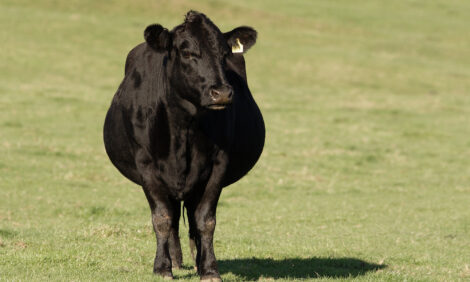



The Impact of US Carbon Tax on Livestock Farmers
Climate change legislation was approved in the U.S. House of Representatives last month and the Senate will consider similar legislation when Members return after Labor Day, writes Stu Ellis, University of Illinois Extension.The contentious debate saw most agricultural organizations in opposition because of higher costs that farmers would have to pay, versus the uncertainty of any real financial benefits from carbon sequestration payments. But until the latter is calculated, what is the real cost?
The sources of agricultural costs and benefits are known, so Iowa State economist Bruce Babcock says those can be calculated, even before the final language for the legislation is approved. In his article in the summer issue of the Iowa Ag Review, Babcock says the effects of higher costs for fuel, electricity, fertilizer, and pesticides will determine the change in net farm income.
If farmers are limited on how much greenhouse gases can be emitted from their operation that will have a cost as well. Such a cap on other industries may provide the opportunity for farmers to sell emission credits. An alternative is a carbon tax, which would be paid by companies that cannot reduce their consumption, but would encourage others to reduce their consumption of fuels that emit greenhouse gases.
Agriculture contributes 6.7 per cent of the total greenhouse gases emitted by the US, but the legislation so far does not penalize agriculture. However, higher energy prices would be felt in the form of higher production costs. Babcock looks at an Iowa corn and soybean farm, which produces the following statistics:
- Four gallons of diesel fuel per acre used to cultivate, plant, and harvest crops.
- 60 lbs of N, 50 lbs of P, and 65 lbs of K per acre across two crops.
- Propane is used to dry corn.
One gallon of diesel fuel emits over 10 kilograms of carbon dioxide, and if a $20 per ton tax is applied on carbon dioxide emissions as proposed, that would result in an additional 80¢ per gallon of diesel fuel.
Since natural gas is the primary feedstock for fertilizer, its carbon dioxide emissions must be calculated per pound of fertilizer. Babcock says it totals about 0.14 tons of carbon dioxide per acre across corn and soybeans, and at the $20 per ton tax rate, that would amount to $2.85 per acre in additional fertilizer costs.
To dry corn from 19 per cent moisture to 15 per cent, it requires 0.088 gallons of propane, and with a 180 bushel yield, 15.84 gallons of propane would be required per acre of corn. The propane emits 5.525 kilograms of carbon dioxide per gallon, and at the $20 per ton tax rate, the cost of drying corn would increase by $1.75 per acre. Or $0.87 per acre for both corn and beans, assuming beans do not require drying.
The total would be $4.52 per acre for a corn and soybean farm, and if the combined cost of corn and soybean production averages $300 per acre, the increased costs of a carbon tax would be 3.3 per cent. Babcock’s colleague John Lawrence at Iowa State says livestock farms would be impacted as well, since the cost of fuel, repairs, and utilities add 5 per cent to hog confinement costs. A 20 per cent increase in that cost sector would add 1 per cent to the cost of producing hogs.
On the benefit side of the ledger, Babcock says the adoption of no-till farming allows 0.4 tons of soil carbon to be retained in one acre of soil, and based on the $20 carbon tax, that would increase income potential by $8 per acre. Tree planting sequesters two to nine tons of carbon dioxide per acre per year, which would yield $40 to $180 per acre per year. However Babcock says Cornbelt land would be closer to $80 per acre, and that requires a halt to crop production in favor of tree planting. The benefits to livestock producers would come if there is an investment in manure digesters, which would capture greenhouse gases with an income rate of $100 per cow per year.
Babcock says the negative impact of a cap and trade policy on agriculture will be relatively small, but if production costs around the world rise, then so will commodity prices, which would compensate farmers for higher costs.
Summary:
Under a carbon tax program to reduce carbon dioxide emissions, agriculture’s consumption of fuel and fertilizers will result in higher production costs for corn and soybean production, estimated at $4.52 per acre or a 3.3 per cent increase in average production costs. Livestock costs would be higher by 1 per cent on hog confinement operations. Beef and dairy operations which install digesters, could recapture $100 per cow per year savings because of the various proposals for reducing greenhouse gases.
August 2009


